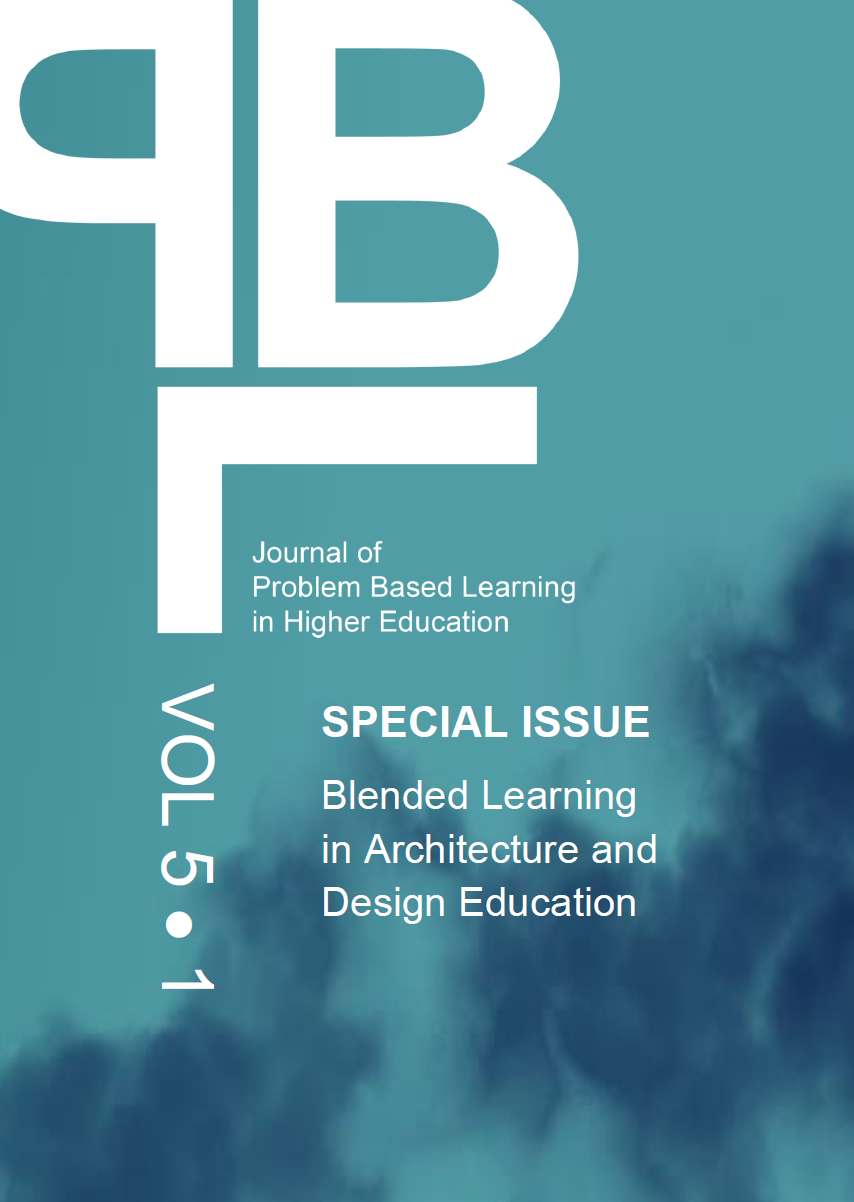Abstract
This paper presents how a blended learning pedagogic model is integrated into an architectural design studio for housing in the Faculty of Architecture in Istanbul Technical University adapting the problem-based learning process. Fall 2015 and spring 2016 semester architectural design studios for fourth and sixth level undergraduate students in the ITU Faculty of Architecture were dedicated to housing issues. These studios collaborated with “Introduction to Housing” workspace in the EU OIKONET project. Integration of a blended learning pedagogic model into problem-based studio courses and its improvement in collaboration with the OIKONET platform over a year are also evaluated through the content of ITU design studios.
Keywords: blended learning, problem-based learning, architectural design studio experience, housing, OIKONET.
References
Alkiser, Y. & Ayiran, N. (2009). Some Criticism On The Implication Of Information Technology On Construction For Construction’s Sake, 4th International Congress-Livable environments and Architecture: “Construction in Architecture” Proceedings volume 1, Trabzon, Turkey, pp.111-125.
Aydinli, S. & Kurtuncu, B. (2014). Paralaks Oda (Paralax Room). Istanbul: Cenkler Press.
Aydinli, S. (2012). Enmeshed experience in architecture: understanding the affordances of the old galata bridge in Istanbul. Dordrecht, NL: Springer Science+Business Media.
Ayiran, N. (1995). Mimari tasrim studyolari uzerine bazi notlar (Some notes on architectural design studios). Yapi Journal, 160, 54-60.
Biggs, J. (2003). Teaching for quality learning at university (2nd ed.), Buckingham: SRHE/Open University Press.
Boyer, E. and Mitgang, L. (1996). Building community: A new future of architecture and practice. Princeton, NJ: The Carnegie Foundation for the Advancement of Teaching.
Brawne, M. (1995). Can we describe how we design, In M. Pearce and M. Toy (Eds.), Educating Architects (pp. 72-73), New York: Academy Editions.
Broadbent, G. (1995). Architectural education. In M. Pearce and M. Toy (Eds.), Educating Architects (pp. 10-23), New York: Academy Editions.
Cross, N., (2011). Design thinking. Oxford, UK: Berg.
Davis, H. (2006). Architectural education and vernacular building. In L. Aquith, M. Vellinga (Eds.), Vernacular architecture in the twenty-first century (pp. 231-244). London & New York: Taylor & Francis Group.
De Graaff, E. & Kolmos, A. (2003). Characteristics of problem-based learning. International Journal of Engineering Education, 19(5), 657-662.
Delage, C. & Marda, N. (1995). Concept formation in a studio project. In M. Pearce and M. Toy (Eds.), Educating Architects (pp. 65-67), New York: Academy Editions.
Ellis, V. E. (1997). Ceci tuera cela: Education of the architect in hyberspace. Journal of Architectural Education, 51 (1), 37-45.
Garrison, D. R., & Vaughan, N. (2008). Blended learning in higher education: Framework, principles, and guidelines. San Francisco, CA: John Wiley & Sons.
Groat, L. & Wang, D. (2013). Architectural research methods (2nd ed.). Hoboken, NJ: Wiley & Sons.
Ho, A., Lu, L., & Thurmaier, K. (2006). Testing the reluctant professor's hypothesis: evaluating a blended-learning approach to distance education. Journal of Public Affairs Education, 12(1), 81-102.
NAAB (2014). Istanbul Technical University, Faculty Of Architecture, Department Of Architecture, Annual report 2013-2014 for NAAB.
Joklová, V. & Pifko, H. (2015). Innovation in architectural education - OIKONET experience, Global Journal of Engineering Education, 17(3), 124-131.
Kalay, Y. (1995). Multidisciplinary, collaborative, computer-aided design studio, in B. Colarevic, B. and Kalisperis, L. (eds.), Computing in design: enabling, capturing and sharing Ideas, ACADIA Conference Proceedings.
King, Sarah E. & Cerrone Arnold, K. (2012). Blended learning environments in higher education: a case study of how professors make it happen. Mid-Western Educational Researcher, 25 (1), 44-59.
Madrazo, L., Sentieri, C., Charalambous, N. (tba). Applying a blended learning methodology to the study of housing, Journal of Architectural Education.
McLoone, S., Lawlor, B. & Meehan, A. (2014), On project oriented problem based Learning (POPBL) for a first year engineering circuits project, 25th ISSC 2014 / CIICT 2014 Conference, Limerick, June 26-27.
Picciano A. & Dziuban C. D. (2007). Blended learning: research perspectives. New York: Sloan Consortium.
Precel, K., Eshet-Alkalai, Y. & Alberton, Y. (2009). Pedagogical and design aspects of a blended learning course. International Review of Research in Open & Distance Learning, 10(2), 1-16.
Punie, Y. (2007). Learning spaces: an ICT‐enabled model of future learning in the knowledge‐based society. European Journal of Education, 42 (2), 185-199.
Reffat, R. (2007). The realm of information technology in architectural education. In A.M. Salama & N. Wilkinson (Eds.), Design studio pedagogy horizons for the future (pp. 313-323). Gateshead, UK: The Urban International Press.
Sariyildiz, S. and Van Der Veer, P. (1998). The role of ICT as a partner in architectural design education, Computers in Design Studio Teaching EAAE/eCAADe International Workshop Proceedings, EAAE, Leuven, Belgium, pp.139-146.
Schon, D. (1985). The design studio. London: RIBA Publications Limited.
Simon, H. (1996). The sciences of the artificial (3rd ed.). Cambridge, MA: MIT Press.
Spiller, N. (2014). Paradoxical simultaneities: architectural education at the edge of the 21st century. In N. Spiller and N. Clear (Eds.), Educating architects: how tomorrow's practitioners will learn today (pp. 10-19). London:.Thames & Hudson.
Sullivan, G. (2010). Art practice as research: inquiry in visual arts. Thousand Oaks, CA: Sage.
Teymur, N. (1992). Architectural education. London: Question Press.
Uluoglu, B. (1990). Architectural design education, critics on design studio in the context of architectural knowledge, PhD., ITU, Graduate School of Science Engineering and Technology, Istanbul.
Vaughan, N. (2007). Perspectives on blended learning in higher education. International Journal on E-Learning, 6, 81-94.
Wojtowic, J. (1994). Virtual design studio. Hong Kong: Hong Kong University Press.
Yurekli, F. (2009). Architectural education forum IV: flexibility in architectural education, Conference Proceedings, 26-29 May, Erciyes University Faculty of Architecture, Chamber of Architects of Turkey Publications, 39-42.
Yurekli, H. (2007). The design studio: a black hole. Istanbul: YEM Publications.
Articles published in Journal of Problem Based Learning in Higher Education are following the license Creative Commons Attribution 4.0 (CC-BY)
Authors retain copyright and grant the journal right of first publication with the work simultaneously licensed under a Creative Commons Attribution 4.0 International License (CC-BY). Further information about Creative Commons
